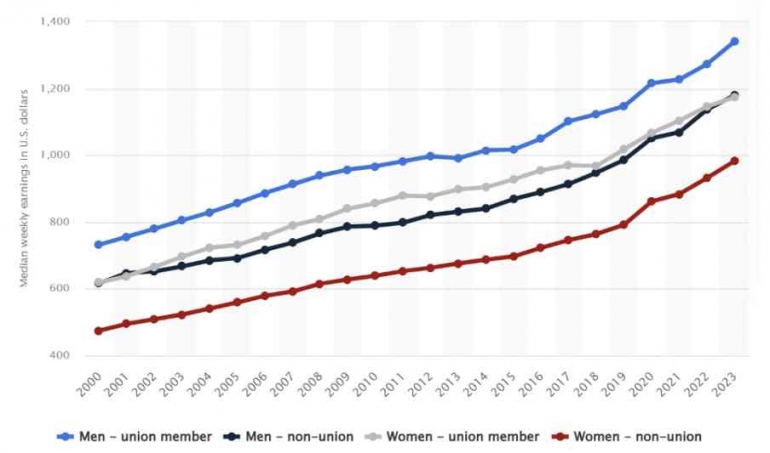We should not assume that the explanation is the lack of interest in unionization. Polling data collected by Richard Freeman (2007) from 1984 to 2004 show an increasing percentage of non-union workers would have voted to form a union if given the opportunity to vote in a secret ballot election. On the other hand, employers have turned sharply against unions. Since the 1970s, employers have fought Unions more aggressively. In the 1970s, rising unemployment, increasing international competition, and the movement of industry to the nonunion South and to rural areas weakened the bargaining position of many American unions leaving them vulnerable to a renewed management offensive. (Friedman, 2008)

The situation became much worse in the 1980s, President Ronald Reagan's mass firing of striking air-traffic controllers (members of the Professional Air Traffic Controllers Organization, or PATCO) in 1981 showed a green light for private industry to do their union busting. After PATCO, employers responded to strikes by firing the strikers and bringing in permanent replacements, a practice that is illegal in many countries, but not in the United States. The number of large strikes was already in decline during the preceding few years and has since declined to microscopic proportions. (Reuss, 2011)
The Current Situation

The share of union members today is at its lowest level over the past several decades. There are 14 million workers who join unions which represent 10% of workers in 2023. Although it is decreasing, in the public sector, union members are still rising and reached 32.5% of its share compared to the private sector who only have 6%. Not to mention there were massive spikes in strikes last year. while declining, there is no means it is gone. (U.S. Bureau of Labor Statistic, 2023)
Do they need to exist?
The labourer belongs neither to an owner nor to the soil, but 8, 10, 12, 15 hours of his daily life belong to whomsoever buys them.
-Karl Marx
Before labor unions existed, they did not have any protection against the exploitation they got. Basic rights like minimum wages, maximum working hours, child labor prohibition, and liveable workplaces exist because the workers fight for it. Labor unions give workers bargaining power to their employers. The ability to strike turns into a weapon for their employers. it causes the wage not set by HR but instead is determined through a process of negotiation between union and firm.
When workers are able to win union representation and collectively bargain, their wages, benefits, and working conditions improve. Union workers are 40% more likely to get health care and retirement benefits compared to non-union workers (US bureau of statistics, 2024). Union workers also have a better working environment. Workplaces with unionized members have 14% less mortality rate than similarly non-unionized workplaces (Zoorob, 2018).














